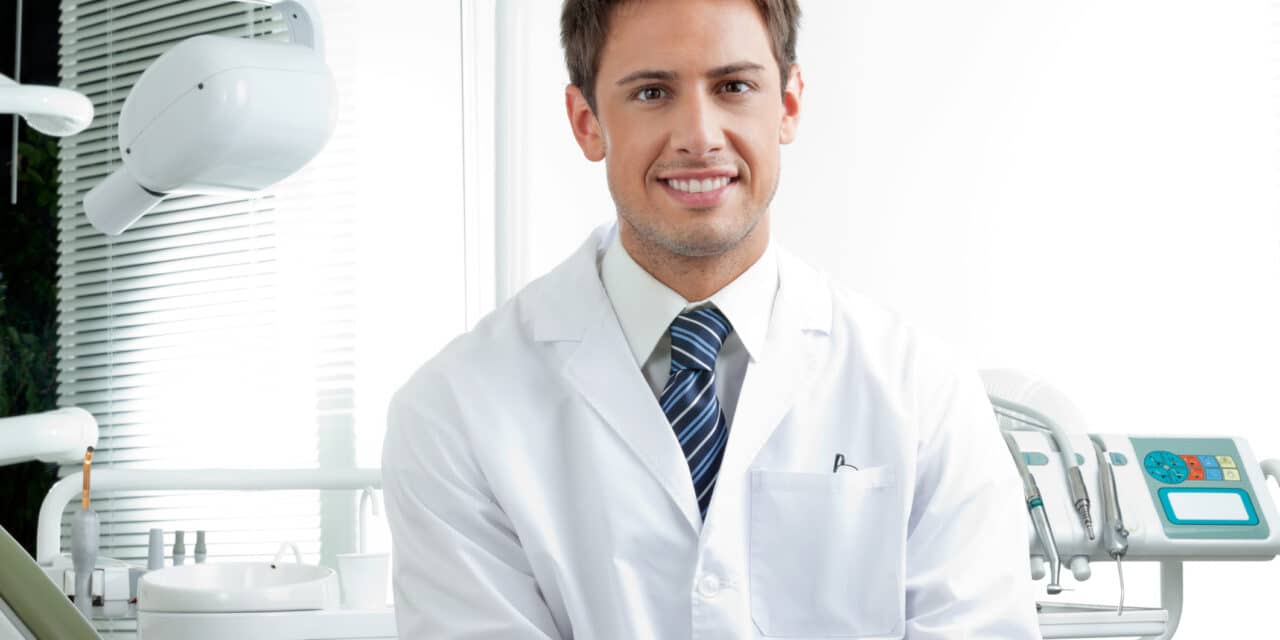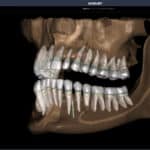From AI regulation to student loan reform, the AAO is advancing initiatives that reinforce the orthodontist’s role in modern care.
By Greg Thompson
The American Association of Orthodontists (AAO) is confronting a host of emerging challenges in the profession—from artificial intelligence and shifting patient expectations to growing student debt and staffing shortages. At the center of its efforts is a commitment to ensuring that technology enhances, rather than replaces, the role of doctors in patient care. With patient safety and provider oversight as guiding principles, AAO officials are responding with legislative advocacy, educational support, and tools to help members navigate the future of orthodontics.
Technology and the Role of the Orthodontist
The mission of the American Association of Orthodontists (AAO) has long been to help prospective patients understand the life-changing benefits of orthodontics. After 125 years and countless beautiful smiles, that message has resonated with patients. In recent years however, the AAO has added issues around technology to its agenda with association officials seeking to drive home the message that technology is useful, but doctors should remain at the helm of any treatment plan.
“The biggest issue over the last few years is teledentistry,” says Trey Lawrence, CEO of the AAO. “What we’ve seen in the direct-to-consumer space, not just in orthodontics but in the rest of dentistry, is technology being used to replace doctors.”
Since doctors are the most expensive part of treatment, companies that can use technology to replace doctors will have lower costs. Lawrence understands the argument but he is adamant; “Our strong contention,” he says, “is that quality of care suffers dramatically when that happens.”
State-Level Legislative Efforts
State and federal legislation can safeguard the profession in many respects and AAO members identify advocacy as the top benefit of membership. “When companies try to replace orthodontists using technology, they claim they are treating through teledentistry,” Lawrence explains. “We are working on laws that put some guard rails in for teledentistry.”
Lawrence agrees that teledentistry can be beneficial for patients and doctors, specifically in areas such as remote monitoring where communication between office visits is enhanced. “Where it goes off the rails is when teledentistry is used so that patients never see the dentist, never have in-person exams, and never have x-rays—particularly before they start treatment,” he says. “An in-person examination and x-rays should be required before patients start orthodontic treatment.”
AAO advocates have lobbied largely at the state level to make these requirements a reality. It’s starting to work, with the state of Nevada becoming the first state to pass a bill requiring patients have in-person exams (with a dentist or orthodontist) prior to treatment.
Florida and Illinois passed similar bills in addition to Utah, West Virginia, Georgia, Oklahoma, and Texas. “We’re not trying to protect orthodontists’ turf,” Lawrence says. “We believe the evidence shows that in-person exams before treatment are crucial to patients’ health and safety during treatment.”
Federal Advocacy and Clear Aligner Regulation
At the federal level, the most logical targets are manufacturers of clear aligners, which are within the FDA’s jurisdiction. AAO has lobbied the FDA to put similar requirements in place—essentially before patients can be sold clear aligners. Lawrence confirms that this is the “top issue” for the foreseeable future.
Ultimately, success on Capitol Hill often depends on when lawmakers hear about certain issues. Within the particular area of orthodontics, the industry evolved at an accelerated pace when clear aligners came on the scene more than two decades ago.
“Orthodontics had the unique position of being one of the first areas of healthcare where treatment could be entirely boxed up and sent to somebody,” Lawrence says. “You can put a whole series of clear aligners and mail it to somebody.”
If this is presented as a way to “expand access to care”, it can sound appealing to legislators. “That’s why we must explain the risks and provide context,” Lawrence adds. “Patient health and safety must be the number one concern.”
Navigating the Rise of AI in Orthodontics
The advance of artificial intelligence (AI) is another technological concern, but even the industry’s leaders acknowledge that AI is a moving target with many unknowns. “We don’t know what the next round of AI will look like,” Lawrence admits, “but we are certain there will be more attempts to replace doctors in the orthodontic treatment equation.”
As president of AAO, Steven M. Siegel, DMD, has also thought long and hard about the implications of technological progress. Siegel and Lawrence agree that AI could improve diagnostic accuracy, streamline workflow, and enhance patient care.
“We advocate that regulators balance patient safety concerns with the innovations that come with artificial intelligence,” says Siegel, who recently retired from clinical practice but maintains his teaching affiliation with the University of Maryland Department of Orthodontics. “AI is going to be a big deal and we will be coming out with a position paper to help our members as they integrate AI into their orthodontic practices so that they do it responsibly.”
According to Lawrence, a diverse group of stakeholders is working on the position paper to identify uses of AI in orthodontics. The goal is to give an overview and predict where it may go, while also offering guiding principles. The human element will again be stressed in the paper, with Lawrence reiterating, “AI can be a great tool to assist doctors, but should not be used to replace doctors.”
Addressing Student Debt and Legislative Advocacy
While technology and legislation remain top priorities, the AAO is equally invested in addressing the economic pressures impacting its members. On average, orthodontic residents emerge from their training with $567,000 in student debt. It’s a significant number that can impact early career decisions about whether to join a practice, acquire a practice, or treat patients in under-served communities.
The AAO is trying to help by advocating at the federal and state level. Potential legislation includes the Resident Education Deferred Interest (REDI) Act, which would allow for the deferral of interest while residents are still in their orthodontic residency.
“We also have the Student Loan Refinancing and Recalculation Act which would eliminate student loan origination fees—and defer interest and payments while students are still in their residency program and make it easier to refinance some of the student loans,” Siegel says. “It’s a big concern and we’re doing what we can to help our members. I’m guardedly optimistic.”
Workforce Challenges and Training Access
For orthodontists looking to expand the practice and improve workflow, reliable staff members are still the key. Siegel contends that many orthodontic staff left during the COVID pandemic and did not return. AAO responded with a task force on staffing and developed a multi-pronged approach to address shortages.
“A few months ago I went to the Annapolis state legislature and testified before a House subcommittee about pending legislation that would have created an impediment to getting orthodontic assistants trained,” Siegel reports. “I testified that this legislation was problematic, and we were successful. We can now still facilitate training of orthodontic assistants using virtual and remote training tools like Trapezio, which is the AAO-endorsed training product. We advocate to make sure there are not unnecessary and overly burdensome regulations that prevent bringing staff into the profession.”
Supporting Education and Embracing Innovation
Education for orthodontists remains the linchpin of the profession and it starts at the level of orthodontic residency programs. AAO supports orthodontic faculty with full-time faculty fellowship awards and craniofacial fellowship awards. “We also developed TechSelect,” Siegel enthuses, “which is a comprehensive objective resource to learn about all things digital, including in-house 3D printing and direct digital, indirect bonding, and remote monitoring,”
One of the hot issues at the recent AAO conference in Philadelphia was 3D printing and Siegel confirms: “We’re seeing more 3D printing of appliances, even metal appliances, and direct printing of aligners rather than building out models for each aligner. 3D printing is evolving quickly and that’s of great interest to our members.”
Another area garnering interest among AAO officials and members is the field of sleep disordered breathing. “We know that many people have sleep disordered breathing and sleep apnea,” Siegel adds. “What is the role of orthodontists in a treatment team for these patients? It’s another big issue that a lot of people are talking about…By the way, the next AAO Annual Conference is May 1 to 3, 2026 in Orlando, Fla, and it’s going to be epic.” OP
Greg Thompson is a freelance writer for Orthodontic Products.
Photo: ID 36113336 © Tyler Olson | Dreamstime.com










